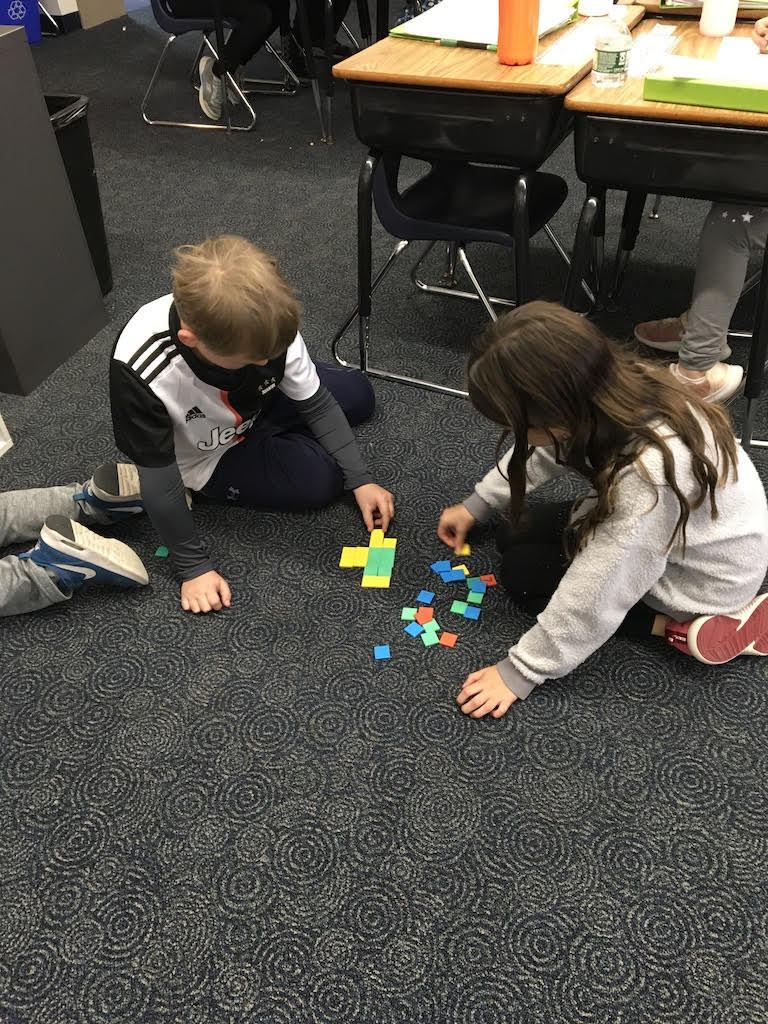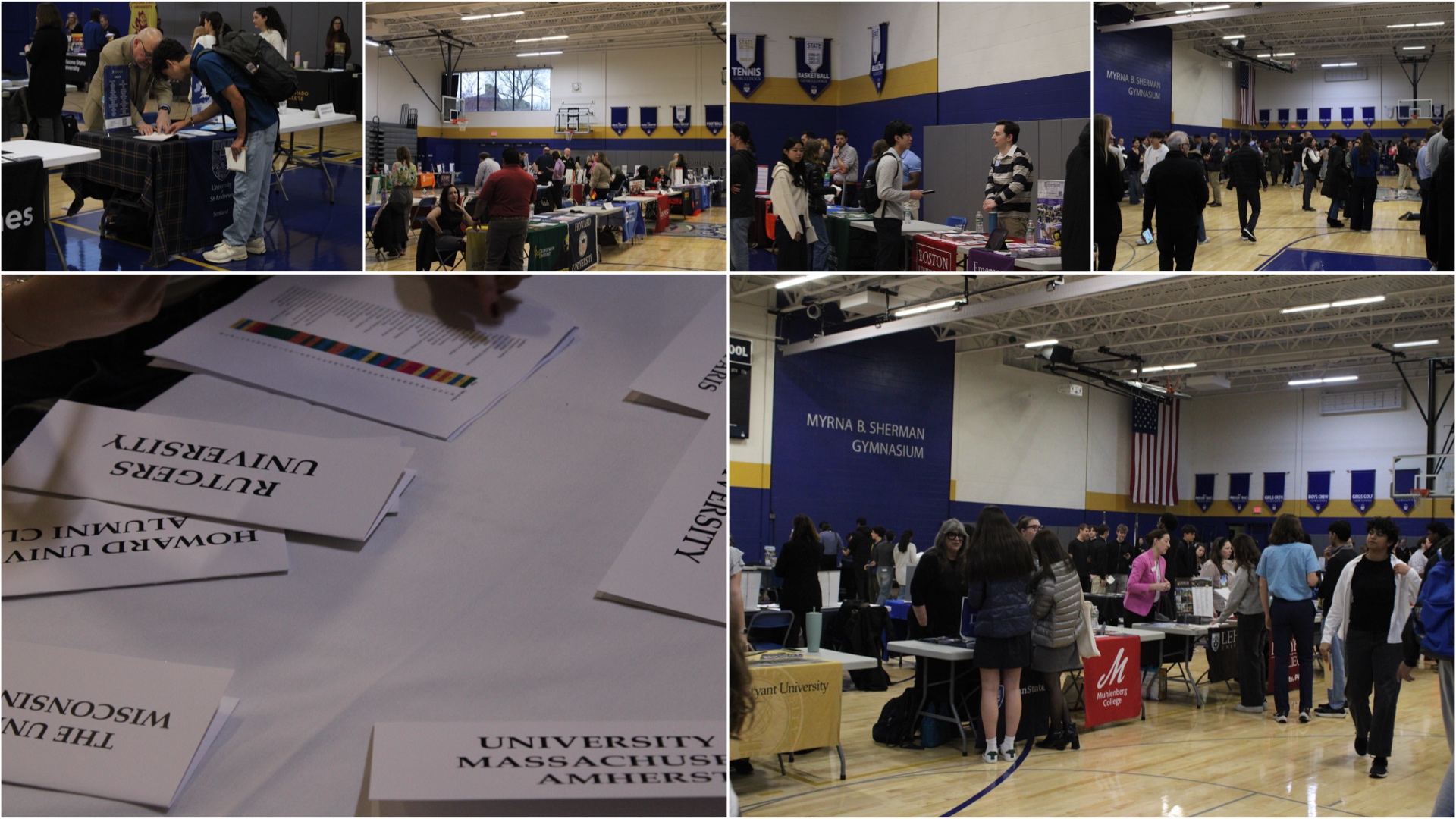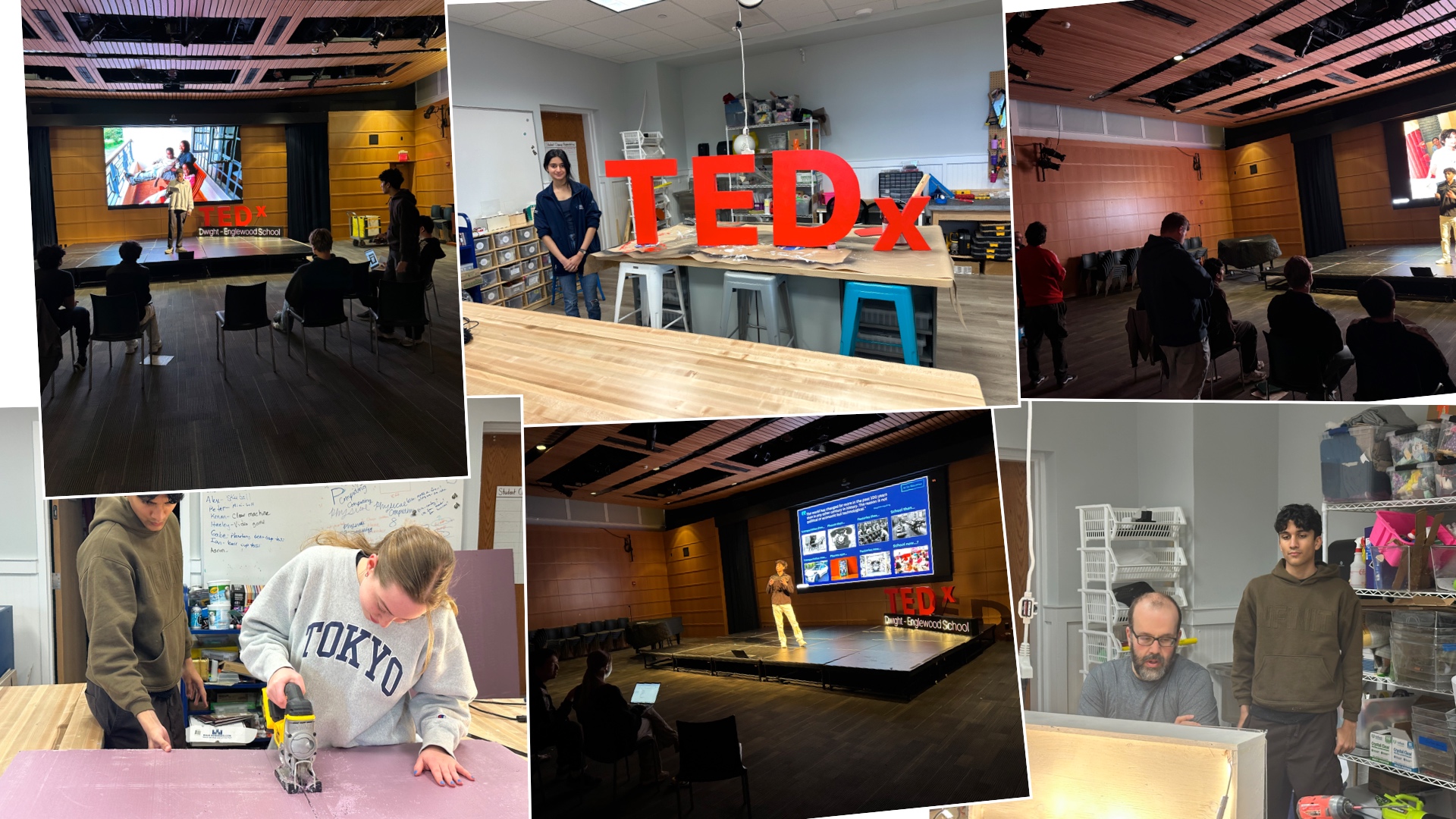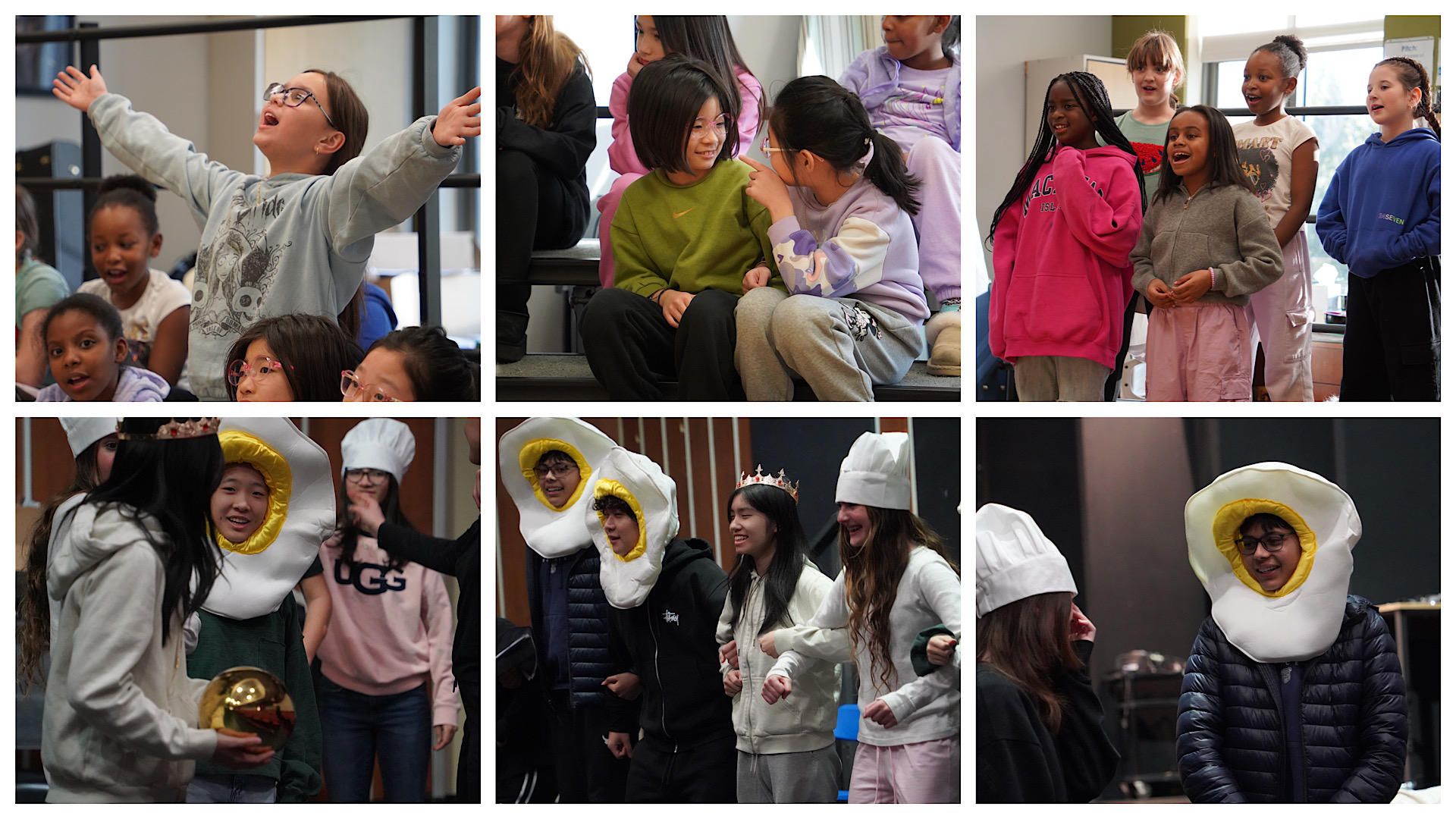Learning to Read and Write
Sophia Dorner, Learning Specialist Preschool 3-Grade 2
In the Lower School, preparation for learning to read
and write to communicate thoughts begins in Preschool 4. The Preschool 4 team
and I plan together during the summer, reflecting on the previous school year
before brainstorming for the upcoming school year. We discuss how to enrich the
literacy program which merges components from Sounds in Motion, Handwriting
Without Tears and FunDations, a component of Wilson Reading
System. Students begin to learn the letter-sound-word association for the
letters in the English alphabet, differentiating between vowels and consonants.
They are taught how to segment sounds and blend them together to read as well
as write known and unknown words. There is an emphasis on pencil grip,
directionality when reading and writing, and 1:1 correspondence when reading.
An introduction to syllabication and compound words adds a kinesthetic dynamic
to the lessons. Lastly, in preparation for the Words Their Way word
study program used in kindergarten through fifth grade, students practice
sorting pictures according to their initial sound. The process of learning to
read and write confidently continues in kindergarten, first and second grade
with the complexity of the skills mentioned above growing with the learners
using Teachers College’s Units of Study in Reading and Writing, by Lucy
Calkins. The collaboration with the kindergarten, first and second grade team
of teachers includes planning, reflection and a merging of our different
research-based literacy programs, as well.
How to Support Literacy Development Outside of School:
- Encourage
your child to speak a lot! Orally formulating sounds strengthens the
development of the muscles in the mouth which is necessary for hearing sounds
in words-a precursor to reading and writing. - Talk
about the environmental print you see as you travel daily, asking your child
questions about letters, sounds and words associated with what you see. - Share
reading and writing times to model the importance of these skills. - Play
traditional board games such as Boggle (Boggle Jr.), Scrabble (Scrabble Jr.),
Bananagrams, Word Grid, Concentration and/or completing puzzles. These family
moments build endurance and focus necessary for successful reading and writing. - Have
your child assist you with labeling your house using words written in the
languages spoken at home to provide a visual connection to the languages. Index
cards work perfectly for this task.
When in doubt, ask me! I am here as a resource to support you and your child’s development and welcome the partnership. Have a great school year.
What Have our 3-5th
Grade Readers and Writers Been up to Lately?
Ashley Gray, Lower School Learning Specialist for Grades 3-5
On the upper floor of
the Lower School, 3-5th grade classrooms are currently wrapping up their Units
of Study in Informational Reading and Writing. During the course of this
unit, students are taught to examine the ways in which writers of non-fiction
organize their writing and entice readers to dive-in to the text. In turn,
students take their careful observations and try them out in their own
writing. Each child picks an area of expertise (in 3rd grade) or a topic
that they would like to become experts in (in 4th and 5th grade) and researches
it in order to create informational books, essays and visual presentations to
showcase their learning. The
informational writing projects look different in each grade, but the process of
researching, thinking critically about and organizing information, is similar
across classrooms and grades.
Over the course of this
unit, it is my pleasure to work with students in each classroom as they talk,
research, organize and write about a great variety of topics including favorite
hobbies, science, famous people and historical events. During this unit,
the energy in each room is palpable and student engagement is extremely high.
By the time they finish this unit, students have developed many important
skills required for informational reading and writing. With this strong
foundation in place, students are poised to become effective, lifelong
consumers of informational books, magazines and online articles.
Exploring Low-Floor, High-Ceiling Math Tasks
Cecily Gottling, Lower School Math Specialist






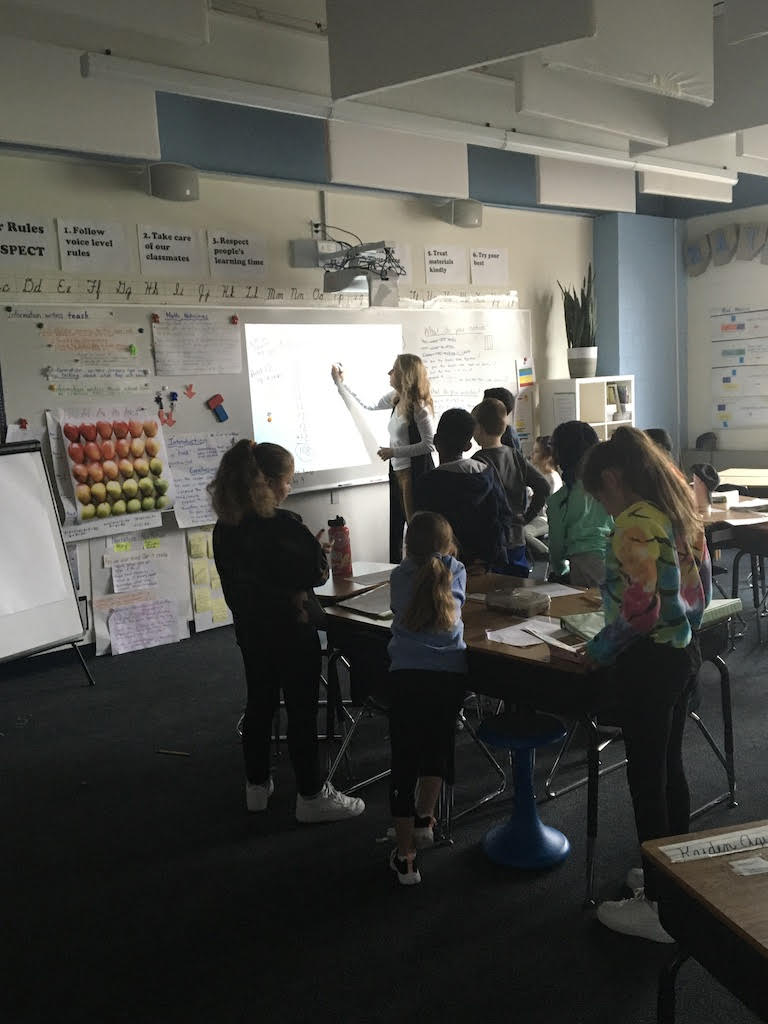


Part of my job as the Lower School Math Specialist is to help students maximize their learning and to help teachers improve their instruction and implement our mathematics curriculum effectively. At Dwight-Englewood, we believe that problem solving is the heart of mathematics and that every child—with hard work and good teaching—can unravel challenging problems. These goals have coalesced recently as 3rd, 4th and 5th graders dig into what Jo Boaler of Stanford University calls “low-floor, high-ceiling” math tasks. These types of problems are accessible to learners at multiple levels but are also rich enough to provoke deep learning. After a summer workshop at Mt. Holyoke College, our teachers have been bringing these challenging problems to their students. Here’s a closer look at a 3rd grade example.
When the 3rd graders returned to school in
January, Ms. Sussmann and Mrs. Goldberg showed them a 30-second video clip of a
table in the shape of a Swiss cross. At the table a teacher slowly removed
square tiles from a big bag and began to cover one small part of the table with
20-25 tiles. That brief montage spurred a lengthy discussion of the children’s
observations about large numbers, right angles, polygons, fractions, area, and
perimeter. In just the first 20 minutes the activity served a powerful
long-lasting purpose—building connections between what may sometimes seem like
isolated ideas.
The children had a myriad of questions which when carefully linked together eventually led to them to pose two problems they wanted to solve: How many tiles would it take to cover the whole table? How many tiles would go around the outside of the table? Problem-posing is a powerful way to fully engage students in their own mathematics learning. The satisfaction gained from answering your own question is so much greater than dutifully finding an answer to a question a teacher has asked.



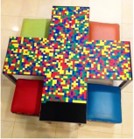
How deep did the children’s discussion dive? Part of
the discussion revolved around the one child’s observation that a section of
the table represented 1/5 of the area and that if they could find that part,
they could find the whole area. After an excursion in a different direction,
the children eventually returned to this idea in the context of perimeter,
noting that the perimeter of the same section of the table would only represent
¼ of the perimeter because the fifth section of the table was in the
interior. Taking the time to observe the situation in detail, the class had, in
effect, already begun to work out a potential solution path without any direct
help from an adult.
After posing the problem and identifying the
information they would need to solve the problem, the children got together
with a partner and began to work out a solution. Here the teacher’s role was to
ask clarifying questions, suggest strategies, and to remind the students to draw
diagrams and write equations so that their solution methods would be clearly
communicated. The quality of the student solutions was extremely high. The
children numbered their steps, labeled their units, used V-formation to
evaluate complex expressions, and re-contextualized
their calculations into answer sentences. These critical skills help students
to think with clarity and to argue the logic of their “proof”.
This problem was given to the 3rd graders
right before they began their study of large number multiplication and provided
a wealth of information about what the children already knew about the topic.
In the children’s solutions the teachers saw many examples of quantitative
reasoning about large numbers which would help them to craft meaningful lessons
connecting the students’ existing understanding of large number multiplication
to a more formal and efficient algorithm.
These open-ended problem-solving sessions have proved
to be an invaluable vein of learning for teachers and students alike. Teachers
have mined them for information about student thinking and skill level and
deepened their own understanding of how concepts such as area and perimeter are
intertwined. Students are discovering in themselves a collaborative community
of mathematicians capable of asking and answering interesting questions.

